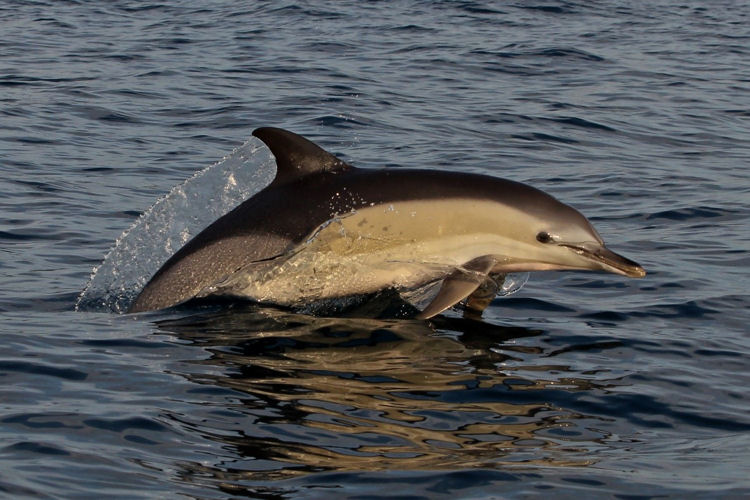Uncommon dolphin repeatedly spotted in northern Adriatic

A dolphin species considered regionally extinct in the Adriatic has been spotted there repeatedly off the Italian and Slovenian coast, according to research led by a marine scientist at the University of St Andrews.
Researchers from Morigenos Slovenian Marine Mammal Society and the Sea Mammal Research Unit at the University of St Andrews have published a new review study on the occurrence of common dolphins in the Gulf of Trieste and the northern Adriatic Sea, published in the scientific journal Aquatic Conservation: Marine and Freshwater Ecosystems.
The dolphin (Delphinus delphis) used to be very common in the Adriatic Sea and other parts of the Mediterranean Sea. However, since the 1970s it has become so rare that the Mediterranean population is now listed as Endangered on the Red List of the International Union for the Conservation of Nature (IUCN).
During the last 30 years, this species has been considered as regionally extinct from the Adriatic Sea, likely due to intentional and systematic killing during mid-20th century. Back then, both Italy and the former Yugoslavia used to pay monetary rewards for every dolphin killed because dolphins were considered a pest that competed with fisheries. Apart from direct kills, the population declines are likely also due to overfishing and the general degradation of the marine environment.
Due to their rarity, all records of common dolphins in the Adriatic and many other Mediterranean areas are important. Despite no previous records, four different animals were observed in the area over a period of four years. Some of these individual dolphins were seen repeatedly, one over the course of two months and one over the course of more than a year.
The research team, led by Tilen Genov, a PhD researcher at the University of St Andrews, documented several records of common dolphins in the Gulf of Trieste between 2009 and 2012 through sightings of live animals or recovery of dead stranded animals, and also reviewed all published records of this species in the Adriatic to date.
Tilen Genov, of the Sea Mammal Research Unit at the University of St Andrews, said: “It is interesting that our new records are relatively numerous for such a short time period, especially considering the rarity of the species and the total number of documented cases in the entire Adriatic Sea to date.
“Dorsal fin markings of live individuals allowed the photo-identification of some of these, suggesting that at least four different live individuals occurred there in recent times, including first confirmed records for Slovenia and the Gulf of Trieste. Most cases involved single adult individuals, but one included a mother-calf pair that was temporarily resident in a port.
“Photo-identification showed that the presumed mother had previously been sighted in the Ionian Sea in Greece, more than 1,000km from the Gulf of Trieste, making this the longest documented movement for this species worldwide (which I and colleagues had published previously).
“Unfortunately, the species continues to be rare in the region. It is difficult to say if the species is likely to make a comeback to the Adriatic Sea. The chances for that are likely slim, as there is currently no evidence of any increase in common dolphin abundance or sightings anywhere in the Mediterranean Sea. But hopefully this contribution can serve as a baseline and encourage potential future cases to be reported, in order to provide further insights into the occurrence of common dolphins in the region.”
Sources from the 1970s report that the last large groups of common dolphins in the Gulf of Trieste were seen in the 1940s. Since then, there have been no records of this species from the Gulf of Trieste, nor from nearby areas, until the records presented in the new study.
Notes to editors
The paper, ‘Occurrence of common dolphins (Delphinus delphis) in the Gulf of Trieste and the northern Adriatic Sea’ by Genov T, Kotnjek P, Centrih T. is published in Aquatic Conservation: Marine and Freshwater Ecosystems. DOI: https://doi.org/10.1002/aqc.3407
Picture caption: Female common dolphin (Delphinus delphis) photographed in the Gulf of Trieste, northern Adriatic Sea. This dolphin was re-sighted between eastern Ionian Sea and northern Adriatic Sea, making the longest documented movement of this species worldwide. Photo: Tilen Genov, Morigenos.